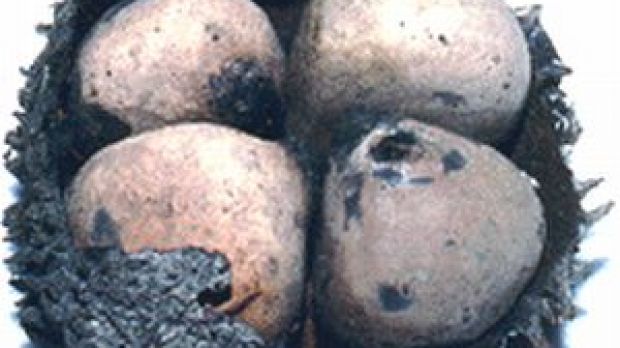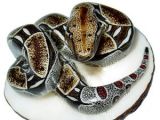One lives in South America, the other in Africa and South Asia, one weighs a few grams, the other a few tonnes.
But the small tagua nut could save the African elephants from a ruthless mayhem.
The tagua nut is the seed of the ivory-nut palm, found in the rainforests of South America.
The palm grows slowly and for years it does not develop a trunk.
A 2 m (7 feet) tall trunk must have 35-40 years.
Under the leaves grow some big, fibrous clusters.
Usually, a cluster weighs about 10 kilos and is formed by woody fruits, crammed one into the other.
Each fruit contains, generally, 4 to 9 seeds, with a shape and size similar to a chicken egg. In the first development stage, the seed contains inside a refreshing liquid, similar to that of the coconut.
In the second stage, the liquid coagulates, resulting a sweet gelatin, which is edible. In the third - and the last - stage, the gelatin turns through maturation into a white, hard substance which looks strikingly similar to elephant ivory.
This vegetable ivory is extremely hard, it can be polished very well, and rapidly adsorbs colorants.
Tagua looks so much like elephant ivory that the artisans often leave on their objects some husk pieces, to prove they do not use elephant ivory, forbidden at international level.
The seeds are left to dry, depending on the water amount, 1-3 months per year.
After that, they are husked with a machine, sorted by size a sliced for making buttons.
In fact, tagua ivory is on quality wearing articles around the world. Tagua is also used for making jewels, chess pieces, piano keys, umbrella handles, and other objects.
The fine powder resulted after the nut processing is used for increasing the nutritional value of the animal food or for getting charcoal.
The tagua ivory was first discovered in 1750 by the South American monk Juan de Santa Gertrudis, who compared in his chronics these nuts with marble balls, used for carving figurines.
At the beginning of the XXth century, Ecuador, the main tagua producer, exported thousands of nut tonnes annually, mainly used for button production.
After the Second World War, the emergence of new cheap plastic materials almost ended the tagua trade.
Since the international ban on elephant ivory trade, more than ten years ago, the tagua trade has started flourishing again, Ecuador trading about 1650 tonnes annually.

 14 DAY TRIAL //
14 DAY TRIAL // 
